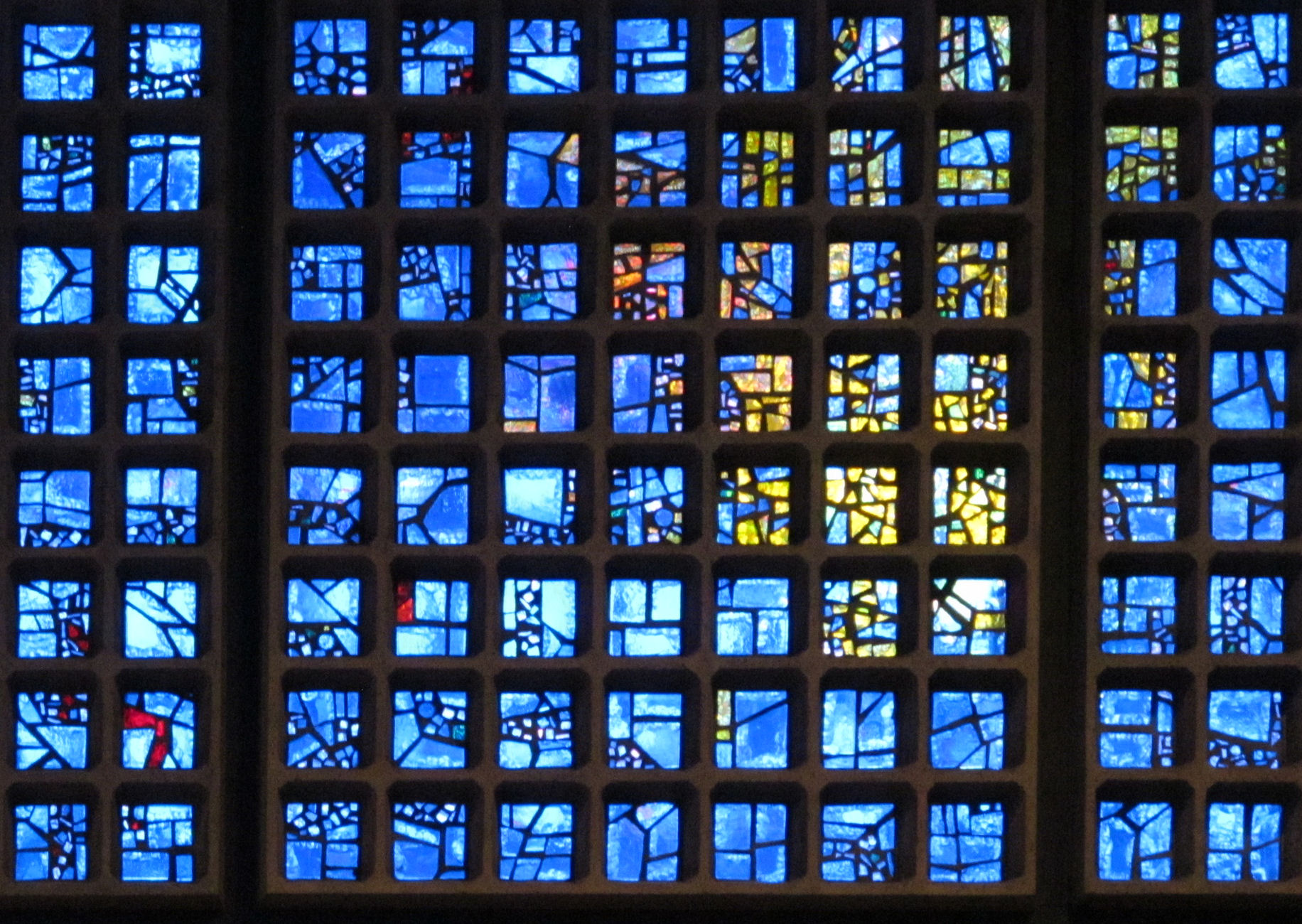Rabbit Holes
03/11/24 15:53
I want to concentrate on two aspects of the grave clothes as described by John.
Jesus calls Lazarus out of the tomb:
“Lazarus”, he says in a loud voice, “come out”.
11.44 The dead man came out… his face wrapped in a cloth
So, his face was still covered by a kerchief, napkin, shroud or cloth.
So what's odd about that you might ask?
Didn’t we also read his body was bound?How could he have taken the cloth off?
Obvious, surely: nothing to see here, let’s move on to the next verse.
And yet, to John, there is something here: but he only makes it plain in chapter 20 after the resurrection:
20. 7 Peter saw the … the cloth that had been on Jesus’ head, …rolled up in a place by itself.
Why has John gone to the trouble of telling us about two apparently similar events with different niggling details?
Well, John is a Jew with a whole shed-load of historical and literary back-story. But John is also a Jew who has seen and believed that Jesus was the culmination of all that the back-story represented.
A major part of that back-story was the collected writings of the Prophetic text named for Isaiah.
If we look at 25. 6f
On this mountain the LORD Almighty will prepare
a feast of rich food for all peoples,
a banquet of aged wine–
the best of meats and the finest of wines.
On this mountain he will destroy
the shroud that enfolds all peoples,
the sheet that covers all nations;
he will swallow up death forever.
So, there’s going to be a party folks! John tells us that Jesus’ first sign was at a party – water into wine. A banquet of aged wine (“you have kept the best wine till last.” said the host.)
BUT the bit we want to concentrate upon follows on:
The Lord will destroy the shroud…
Hum…
So maybe there is a link in John’s reasoning. To open it out a little: the shroud that Isaiah is talking about is not only a death covering but also the cause of death – which in Hebrew tradition was projected as the Angel of Death and the evil impulses which lead to sin and death.
In Paul’s second letter to the Corinthians’ we pick up a similar thread:
3. 15ff Even to this day when Moses is read, a veil covers their hearts. But whenever anyone turns to the Lord, the veil is taken away. Now the Lord is the Spirit, and where the Spirit of the Lord is, there is freedom. And we, who with unveiled faces all reflect the Lord’s glory, are being transformed into his likeness with ever-increasing glory, which comes from the Lord, who is the Spirit.
The veil here is the one Moses had to wear because his face shone when he met God face-to-face. My point is that the glory had to be covered.
YET
When Jesus was raised from the dead Jesus removed his own veil or shroud.
20.7 the cloth that had been on Jesus’ head, not lying with the linen wrappings but rolled up in a place by itself…
I love that it was rolled up, not just cast aside but carefully disposed of. Death has been rolled up and put aside for all to see.
Hallelujah
So, to sum up that little rabbit-hole:
Lazarus is brought back to life, but the covering is still on his face. He is still subject to death.
Jesus is resurrected and is no longer subject to death. Indeed, all the impulses and tendencies to death, any angel that wants to claim it is ‘Death’, has been rolled up and put in the corner of a cave.
Isaiah shouts it from the mountain-top: he will swallow up death forever.
NOW
If we just pop back to Isaiah there is a promise linked to the shroud being removed and death being swallowed:
The Sovereign LORD will wipe away the tears
from all faces;
he will remove the disgrace of his people
from all the earth.
The LORD has spoken.
Well, the John who penned Revelation noted this link as well. In the First Reading we heard:
21. 3f “Now the dwelling of God is with men, and he will live with them. They will be his people, and God himself will be with them and be their God. He will wipe every tear from their eyes. There will be no more death or mourning or crying or pain, for the old order of things has passed away.”
He who was seated on the throne said, “I am making everything new!”
The Everything New begins with Jesus.
My second rabbit-hole is also to do with bandages.
11.44
The dead man came out, his hands and feet bound with strips of cloth, and his face wrapped in a cloth. Jesus said to them, “Unbind him, and let him go.”
New life and resurrection are God’s concern: but we have a part in the further work.
WE are told to un-bind and let go. That’s quite a challenge; no sitting on the side-lines then. Those who have responded to the call to ‘come out’ must be unbound and released.
What might that mean?
Even after coming to believe, having been "born... of God" (1:13), "born of water and Spirit" (3:5), or having heard the voice of the shepherd calling us by name (10:3-5), we may still need to be liberated from beliefs, attitudes, habits, addictions, constrictions, traumatic experiences, self-images, or whatever else hinders full living, keeping us bound up in things that smell of death and deprive us of freedom;
and that liberation usually needs the attentive help of other people. "Unbind him, and let him go" is a watchword for love in action.
Note, we are not to bind to some religious construct or that which, in truth, also hinders us. In fact, in unbinding others we will ourselves become free-er: because the truth always sets us free.
Jesus calls Lazarus out of the tomb:
“Lazarus”, he says in a loud voice, “come out”.
11.44 The dead man came out… his face wrapped in a cloth
So, his face was still covered by a kerchief, napkin, shroud or cloth.
So what's odd about that you might ask?
Didn’t we also read his body was bound?How could he have taken the cloth off?
Obvious, surely: nothing to see here, let’s move on to the next verse.
And yet, to John, there is something here: but he only makes it plain in chapter 20 after the resurrection:
20. 7 Peter saw the … the cloth that had been on Jesus’ head, …rolled up in a place by itself.
Why has John gone to the trouble of telling us about two apparently similar events with different niggling details?
Well, John is a Jew with a whole shed-load of historical and literary back-story. But John is also a Jew who has seen and believed that Jesus was the culmination of all that the back-story represented.
A major part of that back-story was the collected writings of the Prophetic text named for Isaiah.
If we look at 25. 6f
On this mountain the LORD Almighty will prepare
a feast of rich food for all peoples,
a banquet of aged wine–
the best of meats and the finest of wines.
On this mountain he will destroy
the shroud that enfolds all peoples,
the sheet that covers all nations;
he will swallow up death forever.
So, there’s going to be a party folks! John tells us that Jesus’ first sign was at a party – water into wine. A banquet of aged wine (“you have kept the best wine till last.” said the host.)
BUT the bit we want to concentrate upon follows on:
The Lord will destroy the shroud…
Hum…
So maybe there is a link in John’s reasoning. To open it out a little: the shroud that Isaiah is talking about is not only a death covering but also the cause of death – which in Hebrew tradition was projected as the Angel of Death and the evil impulses which lead to sin and death.
In Paul’s second letter to the Corinthians’ we pick up a similar thread:
3. 15ff Even to this day when Moses is read, a veil covers their hearts. But whenever anyone turns to the Lord, the veil is taken away. Now the Lord is the Spirit, and where the Spirit of the Lord is, there is freedom. And we, who with unveiled faces all reflect the Lord’s glory, are being transformed into his likeness with ever-increasing glory, which comes from the Lord, who is the Spirit.
The veil here is the one Moses had to wear because his face shone when he met God face-to-face. My point is that the glory had to be covered.
YET
When Jesus was raised from the dead Jesus removed his own veil or shroud.
20.7 the cloth that had been on Jesus’ head, not lying with the linen wrappings but rolled up in a place by itself…
I love that it was rolled up, not just cast aside but carefully disposed of. Death has been rolled up and put aside for all to see.
Hallelujah
So, to sum up that little rabbit-hole:
Lazarus is brought back to life, but the covering is still on his face. He is still subject to death.
Jesus is resurrected and is no longer subject to death. Indeed, all the impulses and tendencies to death, any angel that wants to claim it is ‘Death’, has been rolled up and put in the corner of a cave.
Isaiah shouts it from the mountain-top: he will swallow up death forever.
NOW
If we just pop back to Isaiah there is a promise linked to the shroud being removed and death being swallowed:
The Sovereign LORD will wipe away the tears
from all faces;
he will remove the disgrace of his people
from all the earth.
The LORD has spoken.
Well, the John who penned Revelation noted this link as well. In the First Reading we heard:
21. 3f “Now the dwelling of God is with men, and he will live with them. They will be his people, and God himself will be with them and be their God. He will wipe every tear from their eyes. There will be no more death or mourning or crying or pain, for the old order of things has passed away.”
He who was seated on the throne said, “I am making everything new!”
The Everything New begins with Jesus.
My second rabbit-hole is also to do with bandages.
11.44
The dead man came out, his hands and feet bound with strips of cloth, and his face wrapped in a cloth. Jesus said to them, “Unbind him, and let him go.”
New life and resurrection are God’s concern: but we have a part in the further work.
WE are told to un-bind and let go. That’s quite a challenge; no sitting on the side-lines then. Those who have responded to the call to ‘come out’ must be unbound and released.
What might that mean?
Even after coming to believe, having been "born... of God" (1:13), "born of water and Spirit" (3:5), or having heard the voice of the shepherd calling us by name (10:3-5), we may still need to be liberated from beliefs, attitudes, habits, addictions, constrictions, traumatic experiences, self-images, or whatever else hinders full living, keeping us bound up in things that smell of death and deprive us of freedom;
and that liberation usually needs the attentive help of other people. "Unbind him, and let him go" is a watchword for love in action.
Note, we are not to bind to some religious construct or that which, in truth, also hinders us. In fact, in unbinding others we will ourselves become free-er: because the truth always sets us free.



